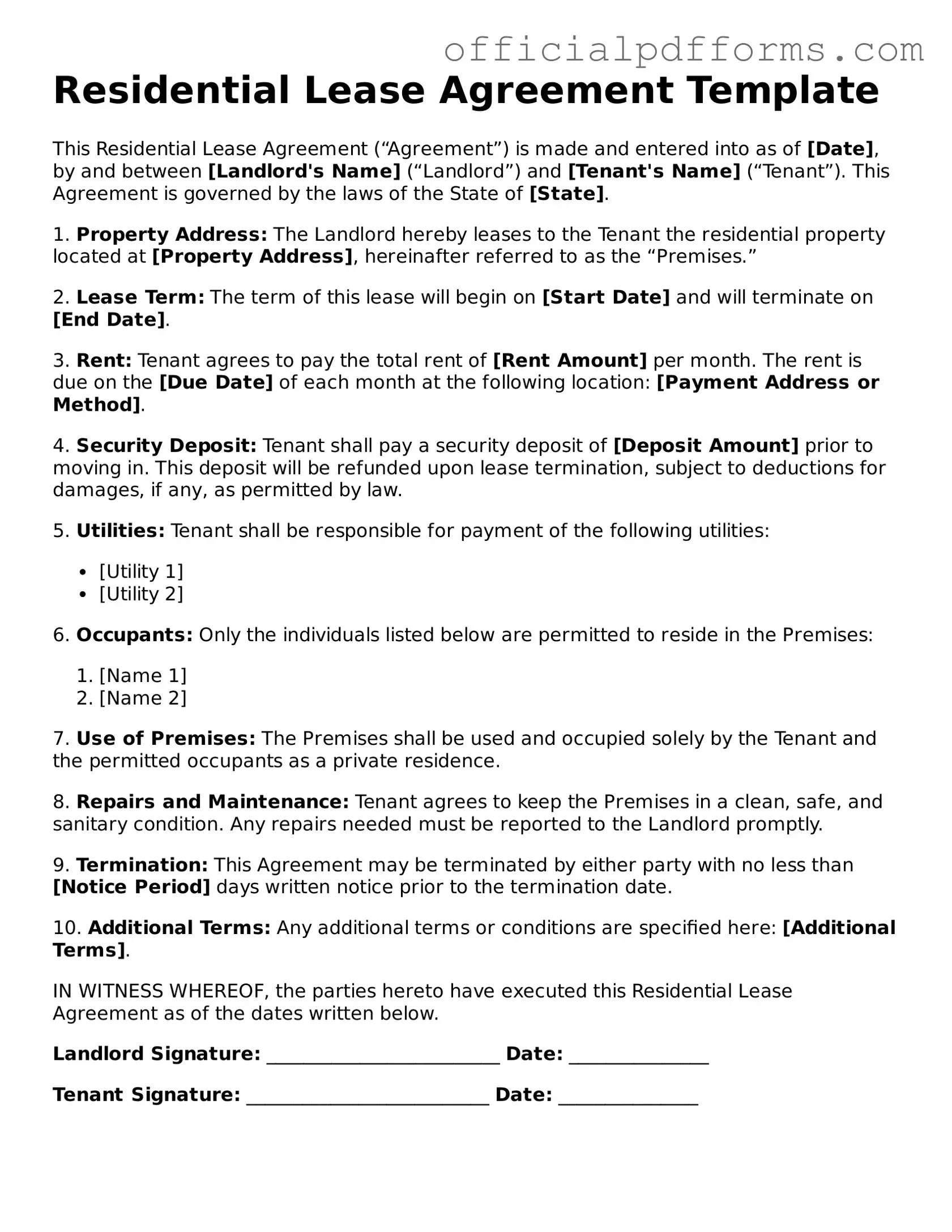What is a Residential Lease Agreement?
A Residential Lease Agreement is a legal document that outlines the terms and conditions between a landlord and a tenant for renting a residential property. It details the rights and responsibilities of both parties, ensuring clarity and protection for everyone involved.
What should be included in a Residential Lease Agreement?
A comprehensive Residential Lease Agreement typically includes the following:
-
Names of the landlord and tenant.
-
Property address and description.
-
Lease term (start and end dates).
-
Rent amount and payment details.
-
Security deposit information.
-
Utilities and maintenance responsibilities.
-
Rules regarding pets, smoking, and guests.
-
Termination and renewal terms.
How long does a Residential Lease Agreement last?
The duration of a Residential Lease Agreement can vary. Most leases are for one year, but they can be shorter or longer. Some agreements are month-to-month, allowing for more flexibility. Always check the specific terms outlined in the agreement.
Can a tenant make changes to the property?
Generally, tenants cannot make significant changes to the property without the landlord's written consent. This includes painting walls, installing fixtures, or making structural changes. Always refer to the lease for specific rules regarding alterations.
What happens if the tenant fails to pay rent?
If a tenant does not pay rent on time, the landlord may have the right to charge late fees, as specified in the lease. Continued non-payment can lead to eviction proceedings. It's essential for tenants to communicate with their landlord if they are facing financial difficulties.
Is a Residential Lease Agreement legally binding?
Yes, a Residential Lease Agreement is a legally binding contract. Both the landlord and tenant must adhere to the terms outlined in the agreement. If either party fails to comply, legal action may be taken to enforce the agreement.
Can a lease be terminated early?
Yes, a lease can be terminated early, but it usually requires mutual consent from both parties. Some leases may have specific clauses that outline the process for early termination, including penalties or notice periods. Always review the lease for these details.
What is a security deposit?
A security deposit is a sum of money that a tenant pays to the landlord before moving in. It serves as a safeguard for the landlord against damages or unpaid rent. The lease should specify the amount of the deposit and the conditions for its return after the lease ends.
What should a tenant do if they have a dispute with the landlord?
If a tenant has a dispute with the landlord, they should first try to resolve it through direct communication. If that doesn't work, reviewing the lease agreement for relevant terms can help. If necessary, mediation or legal action may be options to consider, depending on the severity of the issue.
